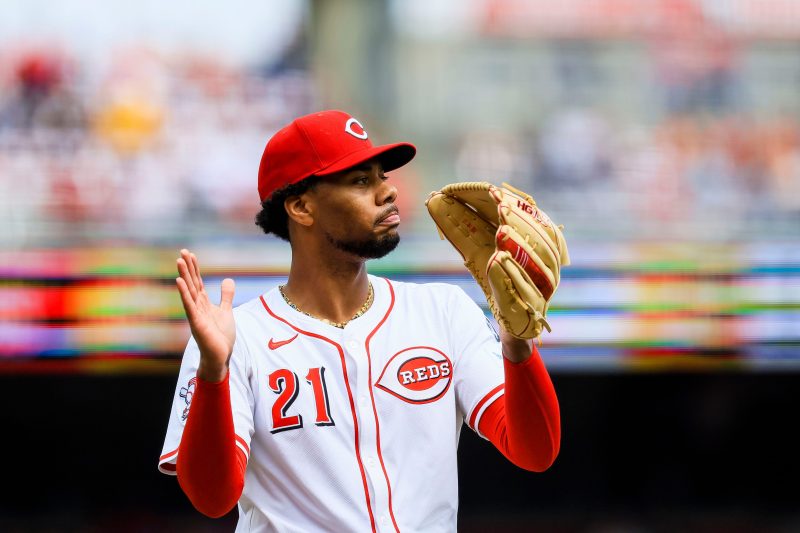Oh, he had plenty of advance billing, as a two-way prep superstar drafted second overall in 2017, one year before Shohei Ohtani ever graced a major league field. Yet even as he always possessed the sport’s most eye-opening currency – a 100-mph fastball – fate seemed to intercede.
Just one pro season into ditching shortstop and embracing pitching full time, he required Tommy John surgery, deleting him from competitive pitching for the 2019 and 2020 seasons.
And even as he got his professional sea legs, the command that comes with a polished product eluded him, resulting in too many home run balls as Ohtani and the indomitable Paul Skenes dominated the discourse.
Yet the non-linear path to fulfilling potential isn’t just for longshot prospects or slumping hitters. Sometimes the can’t-miss flamethrower, the bluest chip in the stack, needs a minute to get there.
“But you know, there’s beauty in that,” Greene tells USA TODAY Sports, “in being able to figure out ways to become a better player and a better person and be able to grow. To add to your development and process.
“I was able to do that. I was able to come back better in a lot of different ways. And it’s made me better as a person, too.”
And it’s clear the Greene that the Reds and baseball fans dreamed on has arrived.
In an era of unprecedented velocity, Greene checks pitching boxes that so many throwers cannot: He throws harder and longer than anyone and, since the beginning of last season, has dominated opposing hitters as much as any starting pitcher.
He’s held opposing batters to a league-low .179 batting average since 2024, with only Skenes (.541) and reigning AL Cy Young winner Tarik Skubal (.566) producing a lower OPS against than Greene’s .578. Greene leads the NL in WHIP this season, at 0.78, and joins an eye-popping quintet of All-Stars atop the leaderboard over the past two seasons: Logan Gilbert, Skenes, Skubal, Zack Wheeler and Greene.
Yes, he belongs in that conversation. But it’s also the manner in which he dominates that gives pause.
Keeping it 100
In Greene’s second start of the season at Texas, he began an 18 ⅔-inning scoreless streak that included several career-high water marks.
An April 7 start in San Francisco marked the first time in his career he pitched into the ninth inning, falling just one out shy of completing a four-hit shutout.
It wasn’t for lack of stuff: In the ninth inning, on his 88th pitch, Greene’s fastball was clocked at 100.7 mph. In his previous start, 56 of his 59 four-seam fastballs were at least 99 mph.
“A lot of guys can touch 100. Hunter throws 100,” says Reds closer Emilio Pagan. “There’s a lot of guys that can throw 98, 99 and hit 100 a couple times in a game. If you look up at Hunter, that game in San Fran, he was 101 in the ninth. That’s ridiculous. He’s kind of on another level with that.
“Obviously Skenes is a name that pops up. I feel like Hunter’s fastball is even more consistent than his. No disrespect to Skenes. But it’s fun to watch, man.”
Like any flamethrower, Greene’s ascendance truly began when he combined power with pitchability. He gave up a combined 53 home runs over 237 innings in his first two seasons, yet cut that number to 12 over 150 1/3 last year.
He’s taken another big step forward so far in 2025. His walk rate ranged from 9% to 9.6% his first three seasons but he’s cut that nearly in half, to 5.1%, and has a 35-6 strikeout-walk ratio through five starts.
Those numbers start with conviction.
“Being able to trust in yourself, believe in yourself, be aggressive in the zone,” says Greene. “And just play the odds. Play the odds of being able to come out on top in an at-bat and just believe in yourself.
“Being able to fill up the zone, you’ll find yourself in a deeper part of the game by getting ahead, getting quick outs.”
Indeed, Greene has completed at least seven innings in three of his five starts, coming off a 2024 in which he did so in seven of his 26 outings. Possessing a fastball ranked in the 99th percentile by Statcast is both a gift and an asset to be nurtured.
The lengthier starts add significant value for the Reds. For Greene, it remains a work in progress, a tool both to elicit chase from opposing hitters and use to either set up his burgeoning split-finger pitch or vice versa.
“It comes with time,” he says of harnessing heat. “It was a process for me. I’m still working on it. Some guys just throw it. But being able to know how to use it in certain counts, to certain hitters, and moving the ball around – I feel like that’s a process. Being able to figure that out and find that and use it for you .
“Taking mental notes. The biggest thing is being able to make adjustments.”
The process never ends. Greene’s scoreless streak did not last another pitch on Saturday, when he gave up consecutive homers to Baltimore’s Cedric Mullins and Gunnar Henderson to start the first inning.
He needed 77 pitches to complete three innings, and manager Terry Francona surmised that was enough for this day. Greene’s takeaway?
“That this game is full of failure,” he says. “I wouldn’t be in this position I’m in if I weren’t able to do that.”
‘A real joy to watch him’
That mentality distills the sense of security Greene possesses. He has financial security in the form of a six-year, $53 million deal signed when he was coming off a 5-13, 4.44 ERA campaign in his first full season.
With each dominant start, the pact looks a little more team-friendly, yet Greene will hit the free agent market no later than 30, plenty of time to approach the $40 million per annum pitchers of that age and pedigree have attained.
It’s just as likely he hasn’t neared his performance apex, either.
“Shoot, I hope we haven’t seen it yet,” says Francona. “With good young players, they get to a certain point where they start to get better. They learn there’s another gear. They’re not just trying to survive. They’re trying to thrive.
“I think he saw that he had another gear and came into shape ready to go. He’s got a split-finger now that I think is becoming a weapon. He holds his velocity because he’s in good shape.”
Longevity is important to Greene. He understands the significance that comes with being the preeminent Black pitcher in the game, and the symbolic heft of joining the Black Aces, the informal fraternity of pitchers who have won 20 games in a season.
In this era of bullpen specialization, wins are harder to come by, but Greene keeps that goal close at hand.
“Being able to be in position to where it’s a goal of mine, and also obtainable, is special,” he says. “Hopefully I’m able to obtain that one day.”
That kind of sums up Greene’s station in life: He has an All-Star appearance and a long-term contract under his belt yet doesn’t turn 26 until August, young enough still to dream on the future.
It’s a sweet spot, to be sure – the gifted athlete now able to harness their gift, not at all worried about being the next big thing but embracing the now, with the promise of more very much in front of them.
“You could tell he was not only confident, but super-comfortable with who he is on the mound,” says Pagan, in his second season with the Reds. “That’s a really dangerous combination for an athlete, because he knows he’s good, but he’s also very aware of who he needs to be in order to be the best version of him on any given day.
“It’s been a real joy to watch him, man. Obviously, I knew about his natural ability when I signed here, but to see him grow as fast as he has since I’ve been here, into being a guy who was supposed to be really good and who showed flashes of it to where, when he takes the mound, I feel like he’s going to go nine every time. It just looks like that.
“I know he hasn’t done that yet. But they’re coming, for sure.”
The USA TODAY app gets you to the heart of the news — fast. Download for award-winning coverage, crosswords, audio storytelling, the eNewspaper and more.

